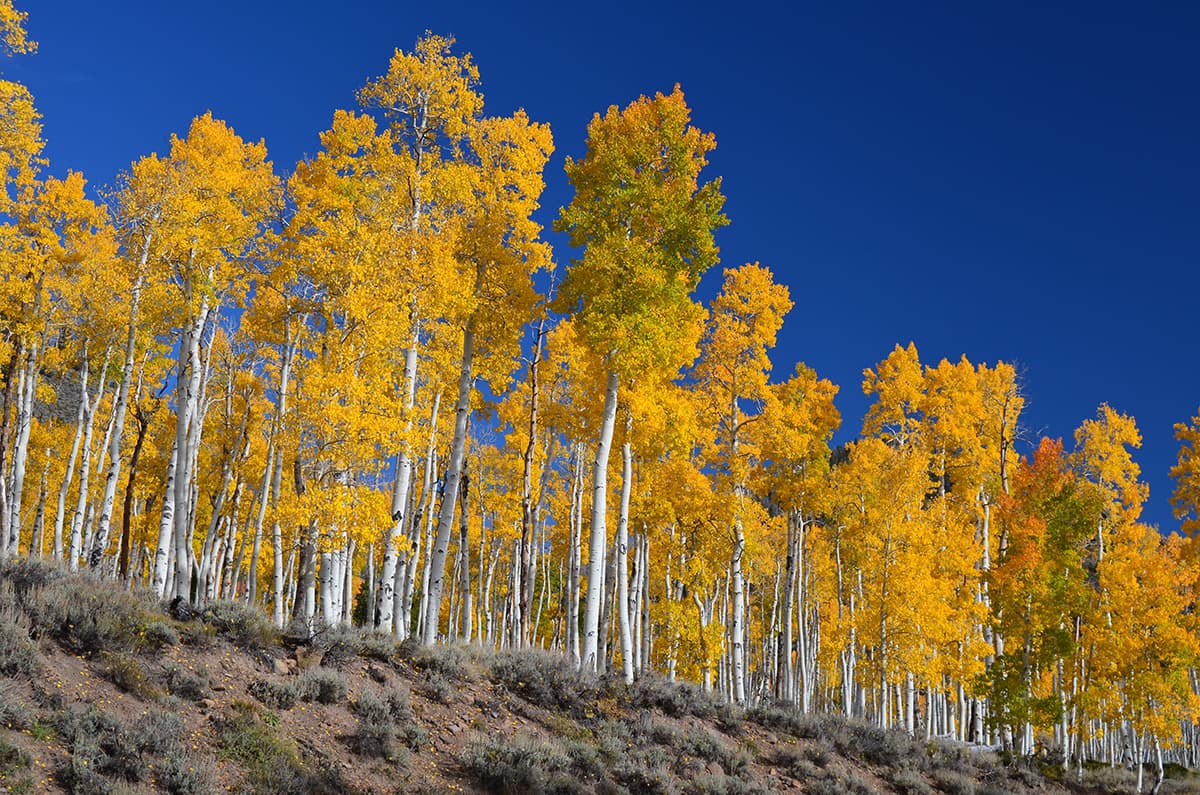Pando invites us to explore, learn, and appreciate the timeless beauty of our planet’s oldest living organism.
In the quiet expanses of Fishlake National Forest in Utah, USA, a remarkable organism silently thrives. Pando, a grove of quaking aspen trees, holds the title of the oldest known living organism on our planet. With roots estimated to be over 80,000 years old, Pando stands as a testament to the enduring resilience of nature.
Unveiling the Eternal Groves of Pando:
Spread across an impressive 106 acres, Pando’s grove of quaking aspen trees appears to be a typical forest at first glance. However, what sets Pando apart is its unique root system. All the trees within Pando are genetically identical, forming what scientists call a clonal colony. This means that they are essentially clones of the original tree, connected by a vast underground network of roots.
A Closer Look at Pando’s Roots:
Pando’s root system is the key to its longevity. The interconnected roots allow the trees to share resources such as water, nutrients, and even genetic information. This collaborative effort among the trees ensures their survival through harsh conditions, including droughts and wildfires.
The Remarkable Age of Pando:
Scientists estimate that the oldest parts of Pando’s root system have been continuously growing for over 80,000 years. This makes Pando not only the oldest known living organism but also one of the most extensive. It has witnessed the rise and fall of civilizations, the changing climates of the Earth, and the passage of millennia.
FAQ
How did Pando come to be?
A: Pando’s story began thousands of years ago when a single aspen seed took root in the fertile soils of Utah. From this seed, the grove slowly grew, sending up shoots that became genetically identical trees connected by a shared root system.
What makes Pando’s root system unique?
A: Pando’s root system allows the trees to reproduce asexually, creating genetically identical copies of the original tree. This makes Pando one of the largest and oldest clonal colonies in the world.
How does Pando survive for so long?
A: The interconnected roots of Pando’s trees enable them to share resources and support each other. This collaborative network ensures the survival of the entire grove, even during challenging times.
Can visitors see Pando in Fishlake National Forest?
A: Yes, visitors to Fishlake National Forest can explore Pando’s grove of quaking aspen trees. Guided tours and hiking trails provide opportunities to witness this ancient wonder up close and learn about its unique characteristics.
Why is Pando important for conservation?
A: Pando serves as a reminder of the resilience and interconnectedness of natural ecosystems. Studying Pando helps scientists understand how organisms adapt and survive over long periods, providing valuable insights for conservation efforts.








[…] The Greenland shark can live up to 500 years, making it the longest-living vertebrate ever recorded. By the way, Earth’s longest-living tree, or rather an interconnected set of trees, Pando, is over 80,000 years old. […]
[…] The Greenland shark can live up to 500 years, making it the longest-living vertebrate ever recorded. By the way, Earth’s longest-living tree, or rather an interconnected set of trees, Pando, is over 80,000 years old. […]